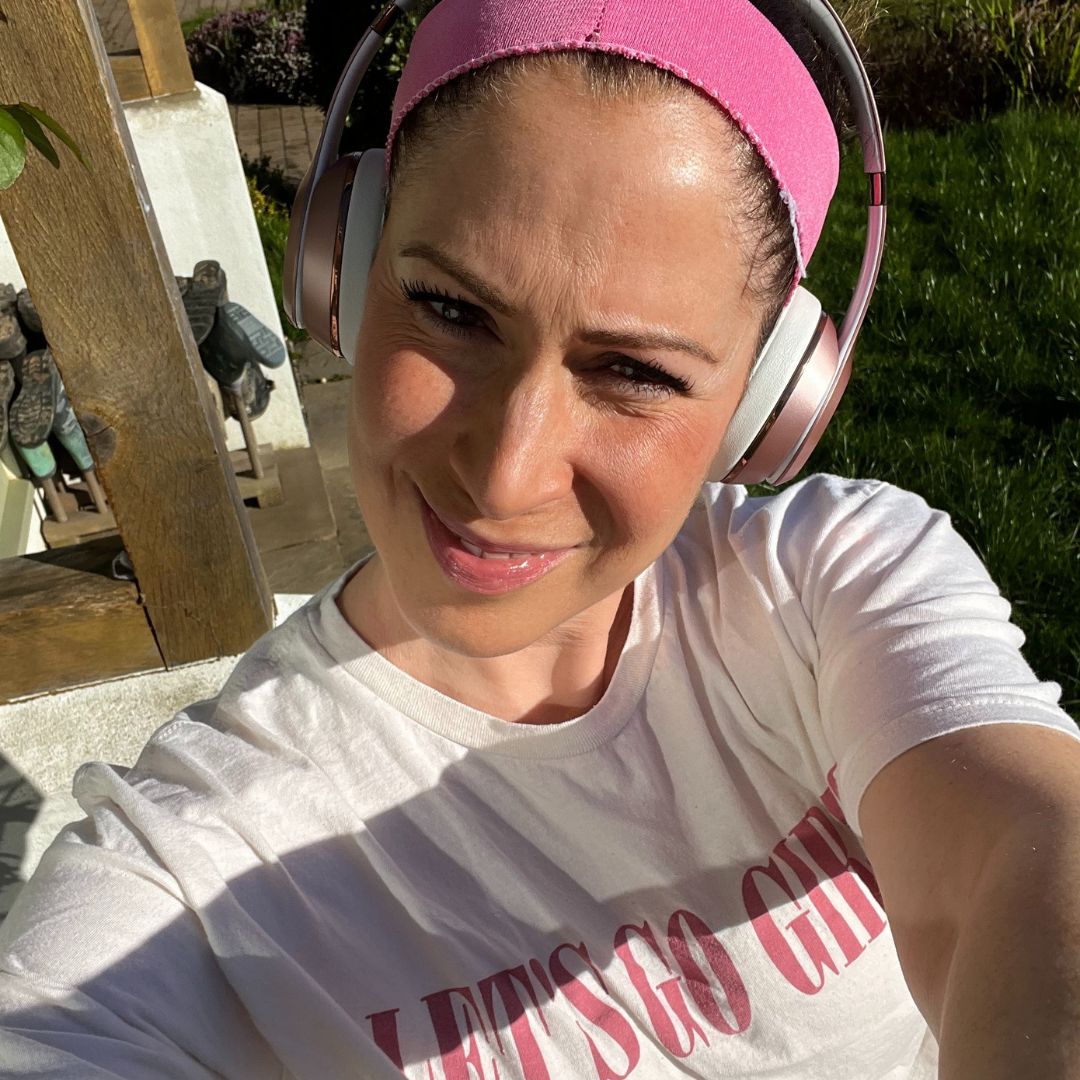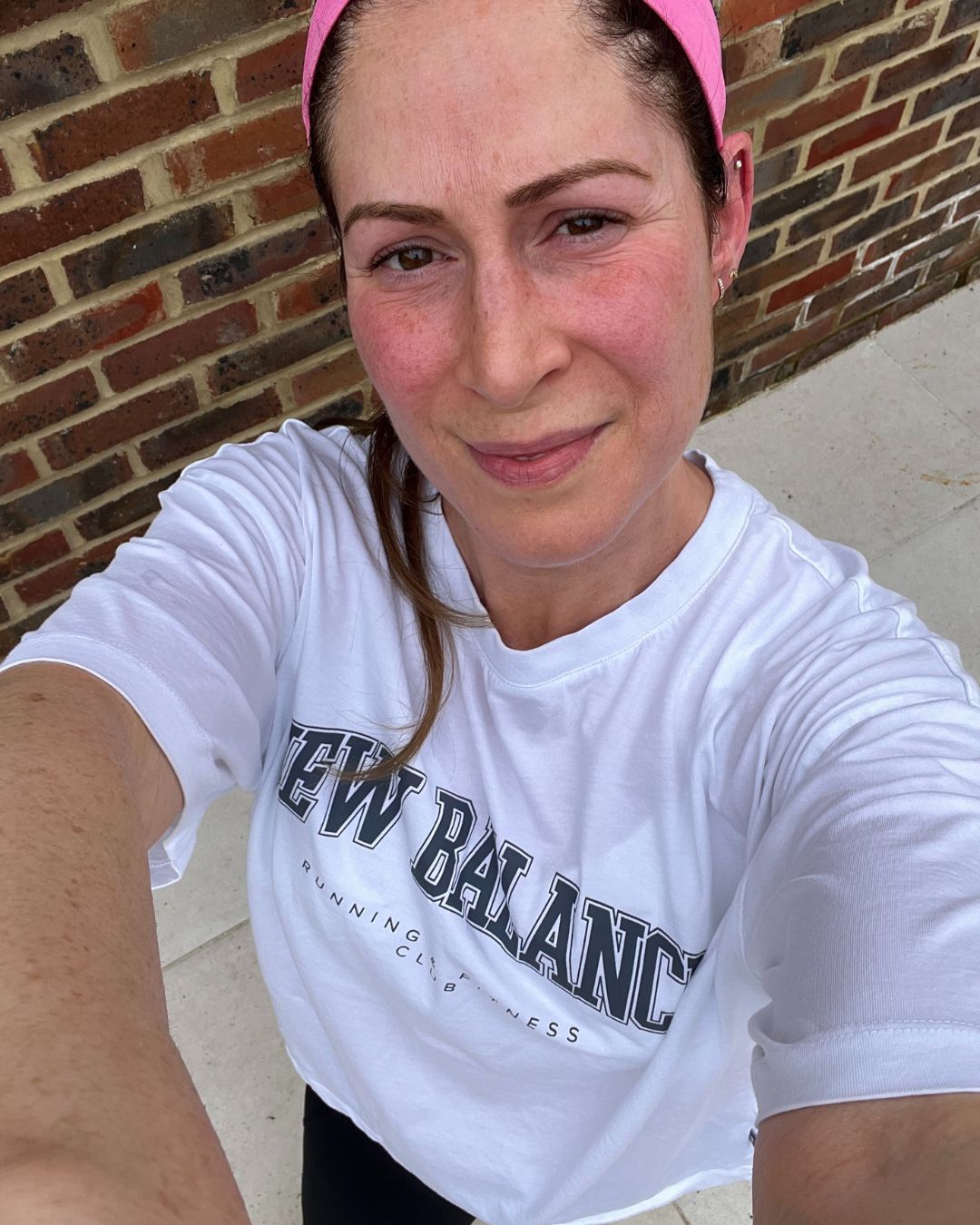
Picture the scene: it’s April 2019, and I’ve been training for four months (give or take) to run my first marathon. I’m confident in my ability to run for around four and a half hours without stopping – I’ve put in the miles, fuelled my body and tapered effectively. Job done – a lovely soak in the bath afterwards followed by eating my bodyweight in roast chicken and macaroni cheese, and three days later I’m ready to lace up my trainers again for a (albeit short) trot.
Fast forward five years, and so much has changed. While I’m still (IMHO) strong, fit and healthy – after all, it is my job to talk about health and fitness – it’s safe to say that my stamina and endurance, in running terms, have nose-dived. I still run regularly, but it’s more of a run-walk-run – not helped by the fact that I happen to live in a particularly hilly part of the country (whoever said what goes up must come down has clearly never run in my local area).
And months (years) of feeling like my running has hit a brick wall is starting to take its toll. Previously, running had always been a sanctuary for me, a space where I could be alone with my thoughts, to work through things in my head and come home with a spring in my step. But lately, I’ve been more reluctant to lace up my trainers. Being faced with the prospect of having to stop every few hundred meters is, it’s safe to say, putting me off.
So, when I was asked to try PT-approved training tips to boost my endurance for two weeks by the Senior Health Editor here at MC UK, I was all in. Would two weeks of targeted training and tweaking yield results? I’m ready to find out. And if running is your jam, you might be interested in our guide to the best running trainers, running tips for beginners, and find out how one of our writers got on with mindful running, here.
I asked a PT how to improve running endurance – and the results have been surprising
What is endurance?
When it comes to any form of running – and, let me be clear, I’m including those of us who run/walk/shuffle/huff our way through a session, as well as those graceful gazelles who seem to float along without a care in the world (who are you?) – endurance is hugely important. But what exactly is it? I turned to PT and ultra-marathoner, Emma Bord, to find out.
“Endurance in running terms is the ability to keep going, or remain active for a long period of time, withstanding fatigue or difficulties during the process,” she explains. “Runners who build up their stamina and endurance are able to run longer distances without getting fatigued, both physically and mentally.”
Sounds pretty simple, but don’t be fooled – endurance is determined by a combination of factors – it’s not simply about fitness. “Endurance is influenced by several factors,” agrees Bord. “Cardiovascular fitness, which involves the ability of the heart and lungs to deliver oxygen around the body and to the working muscles is hugely important, along with muscular strength. In addition, nutrition and hydration are vital - fuelling correctly will provide the body with energy and nutrients needed for sustained performance.”
And that’s before we’ve considered what is possibly (I strongly suspect) the key component for me, at least: mindset. “With any endurance running, the mind is a powerful thing,” agrees four-time triathlon World Champion and former IRONMAN World Record holder, Tim Don. “It can break or make a good session or race performance. It's important to know what your set goal is and have clear steps on how you can achieve that goal.”
So, it’s clear from my past experience that my endurance requires, let’s say, a little work. Fortunately, there are lots of things we can do to boost our endurance and run more comfortably, for longer – and they’re not all hill sprints. Here’s what I learned.
I tried to improve my running endurance for two weeks – here’s what I learned.
Week one
I was pumped to try this challenge, so it’s safe to say my mindset was on point – and luckily, I chose a (rare) sunny morning to lace up my trainers for the first day. Setting off, I decided to do a benchmark and see where my endurance was at – and I was slightly disheartened to discover that at around the five-minute mark, everything in me was screaming at me to stop. After a quick active stretch and breather, I pushed on, knowing that as I racked up some distance, I’d feel better.
Interestingly, I noted that every five minutes or so I had a moment when I really wanted to stop and walk. While I can comfortably run 5K, it seemed that knowing I had to try and run consistently scrambled my mind and I felt the pressure. With that in mind, I chatted to my on-hand experts to discuss why I might be feeling this way. Their first point?
1. Warming up is vital
It turns out, I’d make a rookie mistake. I’d set out without even thinking about banking any warm up exercises. Apparently, a cursory calf stretch doesn’t count. Who knew?
“Most people will either go out straight into their run and start off slowly or will do the standard quad and calf stretch before setting off,” says PT and head coach at London Fitness Mamas, Ben Simpkins. “A better way to get your muscles ready for the task ahead is by doing a dynamic warm up, where you move the muscles in the range of motion that you will be using them for your exercise. Try some leg swings, high knees and lunges to help loosen up your muscles more, and be sure to include some basic hip and ankle mobility.”
Noted – and the next time I headed out, I incorporated these into the first few hundred metres of my route. I’m not going to say I was suddenly flying along, but my legs did feel lighter and I wasn’t forced to stop quite so soon. Win!
However, as is the way with running, when one thing goes right, another hurdle appears (just me?). Feeling looser and more flowing, I decided to try and run an extra mile. Reader, it was a big mistake. While I managed the distance, I felt exhausted and spent the rest of the evening Rule number two? Don’t go too hard too soon.
2. Build up gradually
“When it comes to long runs, increase your mileage gradually in order to prevent injury and give your body the change to adapt to moving for longer without feeling too strained,” cautions Bord. “A good plan is to aim to increase by no more than 10% from week to week, so depending on where you are on your running journey this may mean adding between a kilometre and a mile to your distance each week.”
Lesson well and truly learned.

Week two
Heading into the second week of the challenge, I was feeling more than a little deflated. I knew I was fit and healthy, so why was this proving so tough? I turned to the experts to see if I could pinpoint where I was going wrong.
And you know what? I learned another lesson right there.
3. Setbacks are normal
“The path of an endurance athlete is never linear,” reassures Don. “There will always be setbacks, but rather than giving up, use these as a springboard to your success.”
With renewed resolve, I decided to focus on how my run was feeling, rather than time or distance. And once I’d let go of any expectations, I was surprised to discover that not only did I enjoy the run more, but my pace was actually pretty good, too. Mindful running FTW.
4. Focus on metrics, if you find them helpful
My next lesson? Whereas in week one I’d felt slow and sluggish, in week two, I felt loads better – and tracking my pace really helped me to see that even on the days when it felt a slog, I wasn’t doing too badly.
“Metrics can be really helpful in ascertaining if you just feel like you’re slow,” advises Simpkins. “Sometimes we get comfortable with a set pace and it can feel like a dreadful run but the pace isn’t actually far off what you’d usually do, if you were to track it. Keeping an eye on your pace can help you mentally as it can stop you from just going through the motions on the run.”
Best fitness trackers, at the ready.
5. Respect the fact that endurance is hard work
While I wasn’t seeing much gain in terms of distance covered, my mindset was much improved – and I began to see that, even though I’m fit and active, improving my running would take more than this. I’d conveniently forgotten that in fact, five years ago when I was training for the marathon, I was incorporating hill sprints, speedwork and long runs into my usual routine in preparation for going harder and longer – and those days, weeks and months of hard work just can’t be avoided.
“The best endurance athletes in the world build their endurance base over many years,” agrees Don. “This is why they more typically peak late in their 30s or even their 40s, when many people consider ‘an athlete’ to be somebody in their early 20s. Building endurance is all about that patience, consistency and time. It takes discipline but always delivers rewards.”
6. And finally - be consistent
It’s fair to say that my running schedule is, at best, erratic – and this isn’t doing me any favours, as the experts are unanimous that one of the most important factors in gaining endurance is consistency.
“In order to improve and build endurance in running, primarily, you must be consistent and disciplined with your training,” says Bord. “If you take a stop start approach or miss weeks here and there it will be far more challenging to improve.”
Have I gained any endurance? It’s negligible, if I’m honest. But more than this, I’ve learned so much about myself and my motivations for running. If you’re training for a race or event then yes – without a doubt, you need to focus on strength, variety of sessions, rest and nutrition. But I’m comfortable with the fact that my race days are well and truly behind me. For now, I’m content to lace up my trainers whenever I fancy, and just run. And you know what? That’s enough, for me.
Shop MC UK's go-to running kit now:
There's really only a couple of running essentials you need: a decent pair of trainers and a great, supportive bra. This Sweaty Betty iteration is highly supportive, sweat wicking and has adjustable straps - plus, it comes in a fab range of colours.
We've said it before and we're saying it again: you can't go far wrong with these Adanola ultimate leggings. They stay put even on the longest runs and have a gorgeous array of colourways (my personal favourite is the sea green for spring).
Bra and leggings sorted - now for trainers. These Lululemon running shoes are a great everyday neutral running trainer. Designed specifically for women, four years of research and development have gone into making these as comfortable, supportive and flexible as possible.







